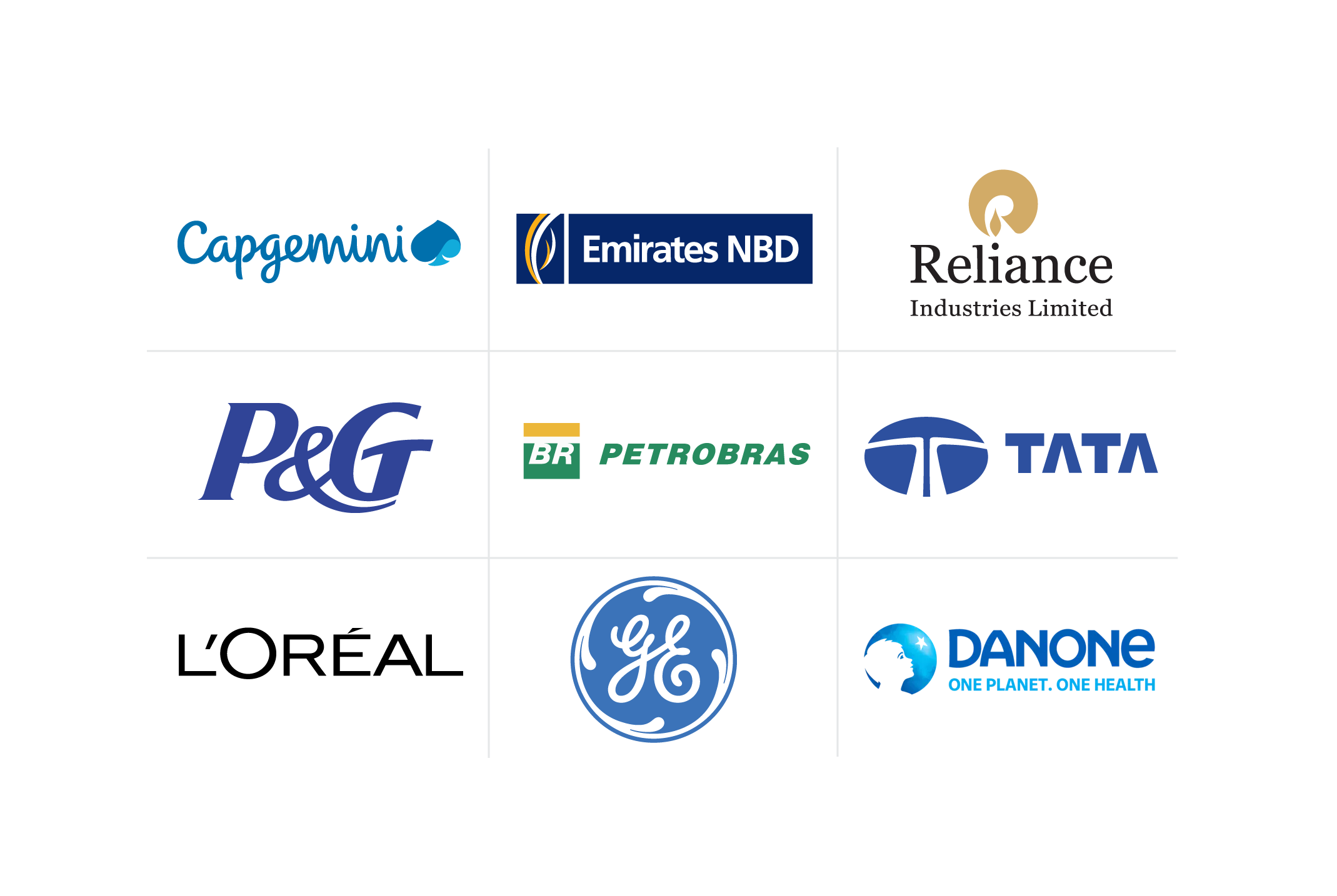OKRs for Learning and Development: Enhancing Corporate Growth
Discover the power of OKR for learning and development and learn how this dynamic tool can support improved employee engagement and drive growth.
![[Featured Image] Colleagues celebrate after reviewing OKR for learning and development and realizing they met their objectives.](https://d3njjcbhbojbot.cloudfront.net/api/utilities/v1/imageproxy/https://images.ctfassets.net/2pudprfttvy6/tnO6UHfX55rkHaIdAJqHU/2aef74878d18196b212059163110c6fe/GettyImages-1833072228.jpg?w=1500&h=680&q=60&fit=fill&f=faces&fm=jpg&fl=progressive&auto=format%2Ccompress&dpr=1&w=1000)
Nine out of 10 organizations value learning and development as their primary employee retention strategy, according to data from LinkedIn's 2024 Workplace Learning Report [1]. Today's workplace landscape is partly driven by people and companies navigating the complexities of embracing emerging technologies like artificial intelligence and workplace skills like people management and problem-solving. Professional development programs are essential for the workforce to keep pace with their employers' evolving needs, and upskilling is critical across industries for employees and businesses to remain competitive.
The World Economic Forum recently predicted that by 2027, technological evolution will disrupt 44 percent of employees' core skills [2]. Skills are an increasingly vital currency that learning programs support and strengthen. For those initiatives to have maximum impact, it’s critical for learners to set goals and for organizations to use analytics and metrics to measure the results. That’s where objectives and key results (OKRs) shine, helping learners, learning and development project managers, and employers track goals and progress and their impact on business.
Defining objectives and key results (OKRs) and their origins
Objectives and key results are a framework that organizations can use to achieve their goals and objectives by setting goals and measuring outcomes. They use a simple, flexible formula that individuals, teams, and companies can apply accordingly: I (or we) will [state objective] as measured by [key results].
If a human resources manager heading up a learning and development initiative were to set OKRs, it might look something like this:
“I will increase employees’ skills as measured by the number of completed training sessions per quarter.”
The HR manager would then monitor the progress and report that, for example, the organization increased attendance and employees completed 75 percent more training sessions.
History of OKRs
OKRs have been around since the mid-1950s, rooted in management by objectives (MBO), a concept introduced by Peter Drucker, author of The Practice of Management. At the time, the idea revolutionized how leaders defined objectives, allowed employees to provide input into goal setting, and provided a multi-step process to align companies' visions and strategies to get the workforce up to speed. Later, businesses set MBO aside as a tool that didn't truly get to the root of helping employees understand their employers' objectives.
Former CEO of Intel, Andrew Grove, introduced the term OKR, based loosely on Drucker’s MBO model. By the 1970s, the company was shifting its focus to microprocessors, and it needed defined goals to support a seamless, successful transition from its prior focus on memory. Grove later shared his idea with John Doer, who introduced the concept to what was then a new start-up, Google. Organizations across the globe use OKRs to this day for various purposes [4].
Understanding OKRs in a corporate context
OKRs benefit employees and corporations by helping everyone understand the goals they're working toward, the significance of their work, and the progress they make. Since its introduction in the 1970s, the concept has become wildly popular as a strategy for helping everyone engage more in organizations’ visions. It provides five essential benefits, as identified by Doer: focus, alignment, commitment, tracking, and stretching, which can help corporations achieve even more than they thought they could.
Corporate uses for OKRs
Some of the top companies in the world adopt OKRs to meet their unique needs. For example, financial companies might use the framework to raise capital, retailers might leverage it to increase customer retention, and software or application developers might use it to support a new product launch. Some of the familiar organizations that enjoy the benefits of incorporating OKRs include the following [5, 6]:
Twitter: OKRs support healthy team collaboration
LinkedIn: OKRs make its vision and mission known and to increase employees' alignment with it
Bill and Melinda Gates Foundation: OKRs support missions with key results that include targets for program rollouts
Netflix: OKRs promote a culture built on transparency and accountability
Amazon: OKRs support teamwork, workflows, and customer-centered goals
Unpacking the power of OKRs in learning and development
While the above examples illuminate various uses for OKRs in a corporate setting, another vital area in which companies of all sizes can leverage the benefit of OKRs is in learning and development programs. Setting goals and attaching meaning to them is one of the vital elements in effective professional development programs. Allowing everyone to understand what their OKR for learning and development will be and why it matters can make a tremendous difference in inspiring positivity and engagement.
Further, using OKRs helps learning and development teams stay on track as well. By setting goals and priorities that align with those of the organization and tracking them, learning and development teams can better communicate the effectiveness of their progress. It’s also valuable to keep everyone involved moving toward shared objectives.
For example, suppose the chief learning office at a software development company wanted to transform the company's culture into one focused on continual learning. They might set key results according to the number of learning hours or knowledge-related activities each employee engages in. They might also tie critical results related to improved performance or revenue generated by each employee due to that additional learning.
Pros and cons of incorporating OKRs in learning and development
That flexibility is just one of the benefits of using OKRs. In today's work environment, which increasingly includes hybrid and fully remote work schedules, incorporating OKRs into the mix is arguably more important across the board, including in learning and development, to propel desired business outcomes forward.
The following offers a quick glimpse of the benefits and potential limitations of applying OKRs to professional development programs.
Benefits of OKRs
Provide clear communication and informed decision-making
Improves transparency, allowing everyone to understand shared and individual priorities
Encourage accountability for individuals, teams, and the entire company
Make it easier to bridge everyday duties and high-level, long-term goals
Foster a culture of collaboration, encouraging everyone to work toward shared goals
Challenges of OKRs
Require consistent, company-wide adoption for optimal results
Potential for misalignment of goals
Too many objectives or overcomplicated OKRs can prevent realistic achievement
Focusing only on numbers may lead to missing broader successes
Must be adjusted and adapted to meet evolving needs and circumstances

Start designing strategic learning objectives with OKRs
As a framework, OKRs focus on specific achievable objectives, align teams and organizations, and provide a continual feedback loop that helps everyone understand progress. Implementing OKRs in learning and development offers everyone smaller goals that work toward the organization's larger strategy.
Incorporate this valuable framework into your learning and development goals by taking the following steps:
1. Identify objectives and key results.
Review the company’s year plan and consider the organization’s overall objectives and desired outcomes. Choose two to three learning objectives that align with those larger goals and three to five key results that can help you measure progress and success.
2. Establish learning initiatives.
Once you know what you hope to achieve, you must consider how you can achieve it. Whether through industry-specific conferences, instituting mentorship programs, bringing in guest speakers, or connecting employees with online learning opportunities, it’s essential to determine the tasks and who will execute them.
3. Decide how to execute the initiatives.
Providing professional development opportunities is rarely a blanket approach. Some learning opportunities may benefit the entire organization, while others may be specific to particular teams or people.
4. Communicate the plan clearly.
Everyone should be fully briefed on the learning and development options, objectives, and benefits of OKRs in helping people, teams, and the company reach their goals. Use success stories and examples from other businesses to ensure everyone understands why you are incorporating the OKR framework and how it works.
5. Engage in continual review and feedback.
Keeping various learning and development initiatives on track requires ongoing review. Weekly or monthly evaluations can help you assess the effectiveness of the programs and adjust them as needed to ensure success.
Leverage Coursera for OKR-driven learning
In 2023, Coursera conducted a survey of leaders in human resources and learning and development across eight countries. The results revealed that organizations are investing more in developing their existing talent. The data shows that 95 percent of learning and development budgets have increased since 2022, with three-quarters of respondents indicating that the initiatives are primarily part of organizations' desire to remain competitive and up to date with technological advances [3].
When you’re ready to roll out your learning initiatives, consider the many options on Coursera. For example, you can help employees develop technological skills with courses in the Tech Academy or the Generative AI Academy. These are just two options available when you leverage Coursera for Business as a valuable tool in your OKR-driven learning initiatives.
With Coursera, your employees will gain access to content from 350+ leading universities and industry partners, where they can build real-world experience with innovative skills, tools, and technologies while earning globally recognized credentials. Our customizable, scalable learning solutions balance workplace skills and technical skills training in diverse formats, from video clips to guided projects and Professional Certificates. Accelerate your digital transformation and equip employees to drive growth with Coursera.
Article sources
LinkedIn. “2024 Workplace Learning Report, https://learning.linkedin.com/resources/workplace-learning-report.” Accessed May 29, 2025.
This content has been made available for informational purposes only. Learners are advised to conduct additional research to ensure that courses and other credentials pursued meet their personal, professional, and financial goals.

